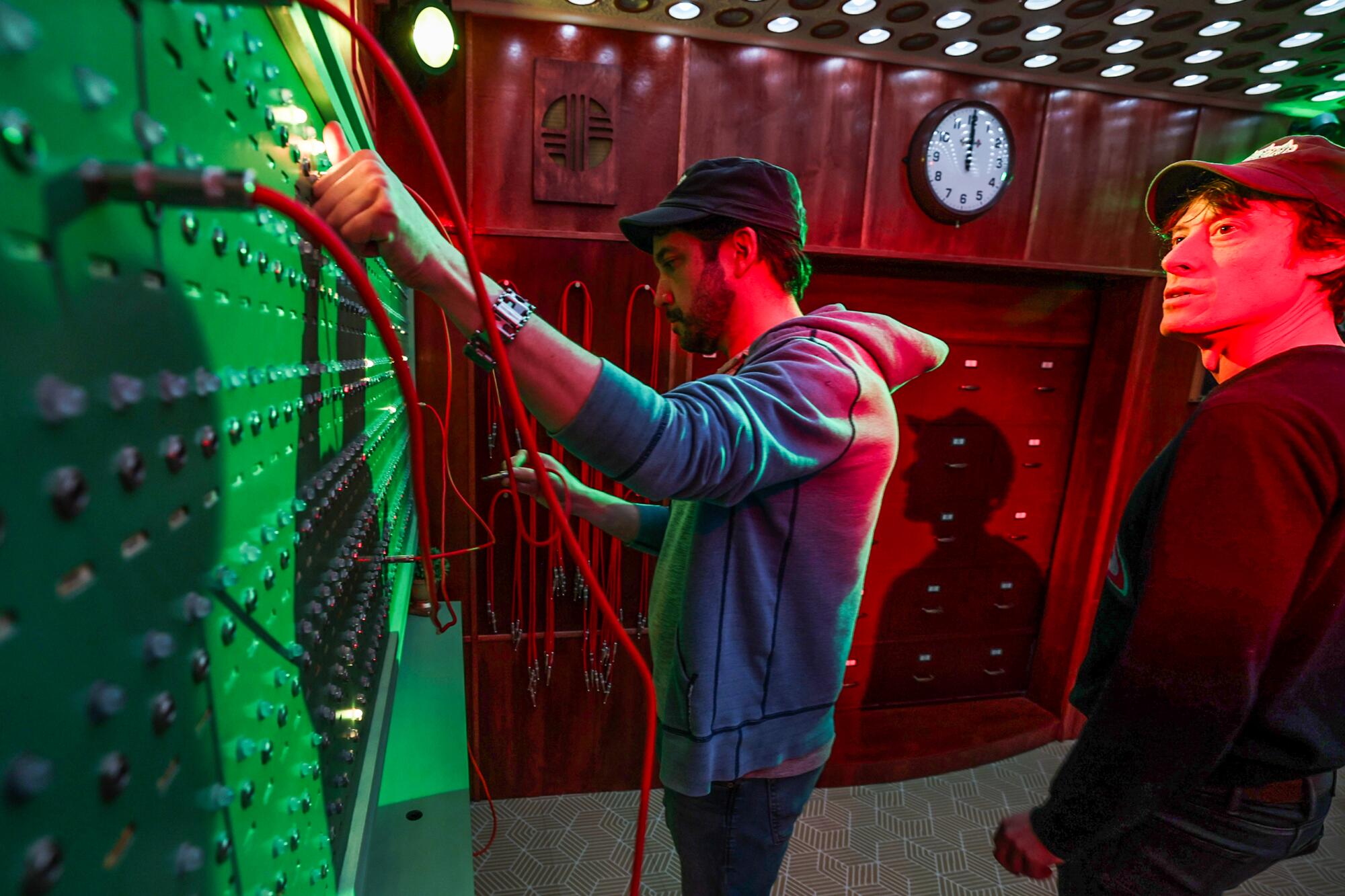Explore Why Escape Rooms Are Fun and Offer a Distinct Way to Bond With Friends and Household
Retreat areas have emerged as a fascinating form of home entertainment, supplying a blend of immersive storytelling and psychological excitement that is both challenging and gratifying. What exactly sets escape areas apart as a bonding experience?

Immersive Storytelling
While the concept of getaway areas may initially seem simple, it is the immersive narration that absolutely sets them apart. These experiences are carefully developed to deliver individuals right into another world, weaving engaging stories that involve and captivate. From the moment players step into the room, they are wrapped up in a carefully crafted atmosphere, full with intricate information, sound effects, and thematic components that offer to boost the storyline.
Each escape space features a distinct plot, typically including a goal or mystery that individuals must resolve within a set duration. The storyline is not merely a background yet is important to the experience, influencing the design of problems and the layout of the area. This narrative-driven strategy guarantees that every element, from the clues to the style, adds to the unraveling tale, creating an immersive and natural environment.
In addition, the use of sophisticated technology and interactive functions further grows the immersive experience. As an example, digital user interfaces, increased fact, and sensory effects can make the story come active, allowing individuals to really feel as though they are truly component of the unraveling drama. This immersion fosters a sense of enjoyment and necessity, boosting the general enjoyment of retreat spaces.
Mental Excitement
Involving in getaway rooms uses individuals a special type of mental stimulation that tests cognitive capabilities in revitalizing and varied methods. These immersive experiences require people to solve complex puzzles, figure out codes, and believe seriously under time restrictions. This environment cultivates enhanced analytic skills, as participants need to navigate a collection of intricate difficulties that need logical thinking and creativity.
Getaway spaces usually incorporate a variety of puzzle types, from mathematical equations to linguistic riddles and spatial recognition jobs. This range guarantees that different cognitive functions are involved, providing an extensive psychological workout. As an example, fixing a cipher might develop logical abilities, while a physical challenge might improve hand-eye coordination and spatial reasoning. The necessity to shift in between different types of assuming maintains the mind nimble and involved.
Moreover, the time-sensitive nature of escape areas adds an element of stress that improves cognitive performance. Participants are motivated to believe rapidly and successfully, enhancing their capability to process details and choose swiftly. This increased state of mental task can result in enhanced emphasis and sharper cognitive abilities, making getaway rooms not only an enjoyable diversion yet also a useful exercise for the mind.
Teamwork and Participation
Remarkable Experiences
Often, among the most compelling facets of escape spaces is the development of memorable experiences that remain long after the game has wrapped up. The immersive nature of getaway rooms, with their elaborate puzzles and engaging storylines, offers participants with a feeling of achievement and camaraderie that is difficult to duplicate in various other social tasks. These experiences end up being cherished memories, often recounted with enthusiasm and nostalgia.
The collaborative initiative required to solve the difficulties promotes a special sense of unity among participants. Buddies and family participants are offered the opportunity to function with each other in a high-pressure, yet fun environment, strengthening bonds and boosting communication abilities (best escape room orlando). The shared victories and also the occasional failures add to a collective sense of accomplishment and delight
Furthermore, the thematic diversity of retreat rooms ensures that each experience is unique. Whether navigating a haunted estate or understanding clues in a spy-themed setup, Get the facts the range keeps the excitement fresh and the memories dazzling. This selection not only deals with various rate of interests but likewise makes certain that each browse through to an escape room is a distinct adventure.
Essentially, getaway areas supply memorable experiences that build enduring links and give tales to be cherished for many years ahead.
Conclusion
Escape rooms use an unique avenue for bonding via their immersive narration, mental excitement, and dependence on synergy and teamwork. Getaway rooms arise as a one-of-a-kind and delightful activity, combining home entertainment with the advancement of important social and cognitive abilities.

Structure on the foundation of teamwork and participation, the excitement of the challenge in retreat areas offers individuals a thrilling experience that checks their analytical capacities and psychological skill - best escape room orlando.In addition, the very carefully crafted complexity of getaway areas ensures that no two experiences are alike.Frequently, one of the most engaging facets of retreat areas is the production of unforgettable experiences that remain long after the video game has concluded.Additionally, the thematic diversity of getaway rooms makes sure that each experience is unique